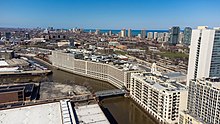
Sears, Roebuck and Co., commonly known as Sears, is an American chain of department stores founded in 1892 by Richard Warren Sears and Alvah Curtis Roebuck and reincorporated in 1906 by Richard Sears and Julius Rosenwald, with what began as a mail ordering catalog company migrating to opening retail locations in 1925, the first in Chicago. In 2005, the company was bought by the management of the American big box discount chain Kmart, which upon completion of the merger, formed Sears Holdings. Through the 1980s, Sears was the largest retailer in the United States. In 2018, it was the 31st-largest. After several years of declining sales, Sears's parent company filed for Chapter 11 bankruptcy on October 15, 2018. It announced on January 16, 2019, that it had won its bankruptcy auction, and that a reduced number of 425 stores would remain open, including 223 Sears stores.
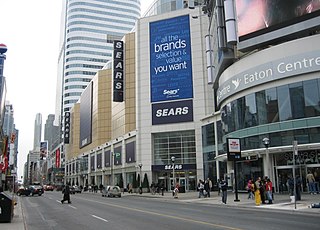
Sears Canada Inc. was a publicly-traded Canadian company affiliated with the American-based Sears department store chain. In operation from 1952 until January 14, 2018, and headquartered in Toronto, Ontario, the company began as Simpsons-Sears—a joint venture between the Canadian Simpsons department store chain and the American Sears chain—which operated a national mail order business and co-branded Simpsons-Sears stores modelled after those of Sears in the U.S. After the Hudson's Bay Company purchased Simpsons in 1978, the joint venture was dismantled and Hudson's Bay sold its shares in the joint venture to Sears; with Sears now fully owning the company, it was renamed Sears Canada Inc. in 1984. In 1999, Sears Canada acquired the remaining assets and locations of the historic Canadian chain Eaton's. From 2014, Sears Holdings owned a 10% share in the company. ESL Investments was the largest shareholder of Sears Canada.

The T. Eaton Company Limited, later known as Eaton's and then Eaton, was a Canadian department store chain that was once the largest in the country. It was founded in 1869 in Toronto by Timothy Eaton, an immigrant from what is now Northern Ireland. Eaton's grew to become a retail and social institution in Canada, with stores across the country, buying-offices around the globe, and a mail-order catalog that was found in the homes of most Canadians. A changing economic and retail environment in the late twentieth century, along with mismanagement, culminated in the chain's bankruptcy in 1999.
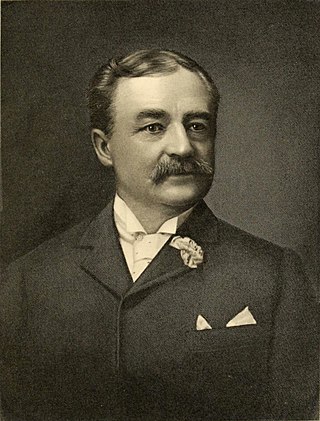
Aaron Montgomery Ward was an American entrepreneur based in Chicago who made his fortune through the use of mail order for retail sales of general merchandise to rural customers. In 1872 he founded Montgomery Ward & Company, which became nationally known.

Western Auto Supply Company—known more widely as Western Auto—was a specialty retail chain of stores that supplied automobile parts and accessories operating approximately 1,200 stores across the United States.
A discount store or discounter offers a retail format in which products are sold at prices that are in principle lower than an actual or supposed "full retail price". Discounters rely on bulk purchasing and efficient distribution to keep down costs.
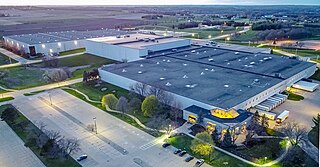
Lands' End is an American clothing and home decor retailer founded in 1963 and based in Dodgeville, Wisconsin, that specializes in casual clothing, luggage, and home furnishings. The majority of the company's business is conducted through mail order and Internet sales, but the company also has 28 retail stores, primarily in the Upper Midwest and Hawaii. From 2002 to 2014, Lands' End was a subsidiary of Sears Holdings.
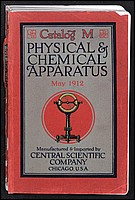
Mail order is the buying of goods or services by mail delivery. The buyer places an order for the desired products with the merchant through some remote methods such as:

Summit Place Mall, originally Pontiac Mall, was a shopping mall in Waterford Township, Michigan, United States. Opened in 1962 as the first enclosed mall in Michigan, it was built on a 74-acre (30 ha) site. After expansions in 1987 and 1993, it comprised more than 1,400,000 square feet (130,000 m2) of retail space. At its peak, it had approximately 200 inline tenants and six anchor stores: Hudson's, Sears, J. C. Penney, Montgomery Ward, Service Merchandise, and Kohl's.
Colony Brands, Inc. is a mail-order and electronic retail company known for its cheese, sausage, chocolate, fruitcakes, and other food products. The company also features extensive offerings in furniture, home decor, apparel, entertainment products, and electronics. It is one of the largest direct marketers in the United States.

Spiegel was an American direct marketing retailer founded in 1865 by Joseph Spiegel. Spiegel published a catalog, like its competitors Sears and Montgomery Ward, which advertised various brands of apparel, accessories, and footwear, as well as housewares, toys, tools, firearms, and electronics. Their company brands included Newport News, Shape FX, and Old Kraftsman, among others. They also operated brick-and-mortar stores.
A catalog merchant is a form of retailing. The typical merchant sells a wide variety of household and personal products, with many emphasizing jewelry. Unlike a self-serve retail store, most of the items are not displayed; customers select the products from printed catalogs in the store and fill out an order form. The order is brought to the sales counter, where a clerk retrieves the items from the warehouse area to a payment and checkout station.

Gamble-Skogmo Inc. was a conglomerate of retail chains and other businesses that was headquartered in St. Louis Park, Minnesota. Business operated or franchised by Gamble-Skogmo included Gambles hardware and auto supply stores, Woman's World and Mode O'Day clothing stores, J.M. McDonald department stores, Leath Furniture stores, Tempo and Buckeye Mart Discount Stores, Howard's Brandiscount Department Stores, Rasco Variety Stores, Sarco Outlet Stores, Toy World, Rasco-Tempo, Red Owl Grocery, Snyder Drug and the Aldens mail-order company. In Canada, retail operations consisted of Macleods Hardware, based in Winnipeg, Manitoba, and Stedmans Department Stores, based in Toronto, Ontario. Gamble-Skogmo carried a line of home appliances, including radios, televisions, refrigerators, and freezers, under the Coronado brand name.

Rolling Acres Mall was a shopping mall located in the Rolling Acres area of Akron, Ohio, United States. Built in 1975, it originally included approximately 21 stores, with Sears as the main anchor store. Later expansions added several more stores including anchor stores JCPenney, Montgomery Ward, and O'Neil's, along with a movie theater and food court. Montgomery Ward was converted to Higbee's in 1986, and then to Dillard's in 1992, while O'Neil's became May Company Ohio, Kaufmann's, and then finally Macy's. The fifth anchor store was Target, added in 1995. At its peak, the mall had over 150 stores. It underwent a sharp decline in tenancy throughout the 1990s and into the first decade of the 21st century, resulting in the relocation of Target and closure of Dillard's. Macy's and the mall itself both shuttered in 2008, although Sears remained operational until 2011, and JCPenney as an outlet store until 2013. Rolling Acres Mall was publicized after its closure as an example of a dead mall, and non-retail ventures operated out of the former locations of Target, Sears, and Dillard's. The mall was finally demolished in stages between 2017 and 2019, with Amazon building a distribution facility on the former site soon after.
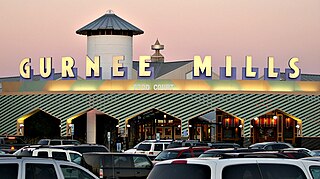
Gurnee Mills is a shopping mall and outlet mall in Gurnee, Illinois, within the Chicago metropolitan area. Like the nearby Six Flags Great America and Great Wolf Lodge, the mall's placement in Gurnee is intended to bring customers from both Chicago and Milwaukee, Wisconsin. With 1,936,699 square feet (179,925 m2) of gross leasable area and ten major anchor stores in its Z-shaped single-story building, it is the third largest mall in Illinois, and the largest of the four enclosed shopping centers in Lake County. Owned and operated by the Simon Property Group, it was an early part of the "Landmark Mills" chain of shopping malls built by the Mills Corporation. The mall features Hobby Lobby, Macy's, Kohl's, Marshalls/HomeGoods, Value City Furniture, Bass Pro Shops Outdoor World, Off Broadway Shoe Warehouse, Forever 21, H&M, Dick's Sporting Goods, Marcus Theatres, Rainforest Cafe, Top Shelf Ice Arena, The RoomPlace, Lee Wrangler Clearance Center, Burlington Coat Factory, and Floor & Decor as its anchor tenants.
Thom McAn is an American brand of shoes and was formerly a retail chain. It is currently sold in Kmart and Sears stores. It consists of leather-dress, casual, and athletic shoes. Until the 1990s, Thom McAn had hundreds of retail stores in the US, and was one of the oldest and best-known shoe retailers in the country. As of late 2008, the brand was controlled by Sears Brands, LLC.
Sewell Lee Avery (November 4, 1874 – October 31, 1960) was an American businessman who achieved early prominence in gypsum mining and became president of the United States Gypsum Company (1905–1936). At the beginning of the Depression, he was asked by J.P. Morgan & Co. to turn around the failing Montgomery Ward and succeeded in restoring its profitability by making huge changes. In 1936, Fortune magazine said that Avery was "generally held to be the No. 1 Chicago businessman." In the postwar years, however, he failed to take advantage of the demand for durable goods and did not expand Montgomery Ward, costing it prominence in the retail field.
Glentel is a Canadian telecommunications retailer based in Burnaby, British Columbia, jointly owned by BCE Inc. and Rogers Communications.
Sears Holdings Corporation was an American holding company headquartered in Hoffman Estates, Illinois. It was the parent company of the chain stores Kmart and Sears and was founded after the former purchased the latter in 2005. It was the 20th-largest retailing company in the United States in 2015. It filed for Chapter 11 bankruptcy on October 15, 2018, and sold its assets to ESL Investments in 2019. The new owner moved Sears assets to its newly formed subsidiary Transform Holdco LLC and after that, Sears Holdings Corporation was closed.
Sears Hometown and Outlet Stores Inc. was an American retail company that sold home appliances, lawn & garden equipment, apparel, mattresses, sporting goods, & tools. The company had four subsidiary store formats: Sears Hometown, Sears Outlet, Sears Hardware and Appliance, and Sears Home Appliance Showrooms. Sears Hometown and Outlet Stores was based in Hoffman Estates, Illinois. Sears Hometown and Outlet Stores was founded in April 2012. The company was a spun off from Sears Holdings in 2012. By May 2019, Sears Hometown and Outlet Stores & its independent dealers & franchisees operated a total of 639 stores across 49 states as well as in Puerto Rico & Bermuda. On June 3, 2019, it was announced that Transform Holdco would acquire Sears Hometown and Outlet Stores. As per the deal, Sears Hometown needed to divest its Sears Outlet division to gain approval. The company ceased to exist on October 23, 2019, when Franchise Group acquired the Sears Outlet division and Transform Holdco acquired the rest of the company.
